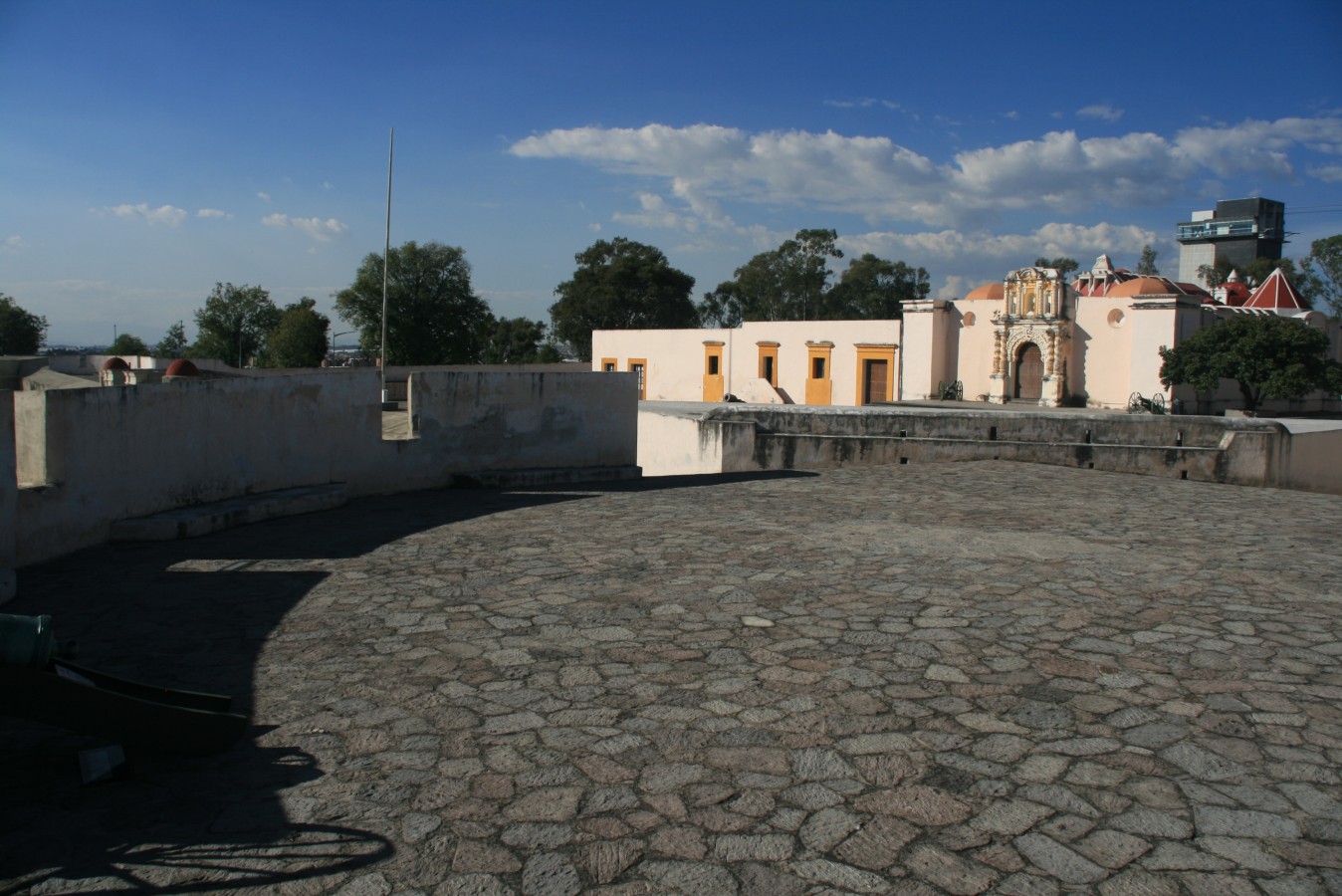The story goes that in 1655 an indigenous man called Don José de la Cruz Sarmiento who lived in Puebla, was crossing the hill of Acueyametepec on his way to Manzanilla when he was caught in a storm. In the middle of the storm he was knocked unconscious by a streak of lightning. Miraculously Don José survived unhurt, but his horse and birds had no such luck. They died instantly. Don José attributed his survival to his faith in the Virgin of Loreto. The following year he asked the authorities for permission to build a hermitage in honor of the Virgin of Loreto. Three years later the Viceroy Duke of Alburquerque granted permission and obtained a license from bishop Diego Osorio de Escobar y Llamas.
The place where the chapel was erected later served as a strategic point for the defense of the city of Puebla. Since it sat on the trade route running from Mexico City to Veracruz, it required a good defensive system with fortifications, ditches and pits to protect the entrance to the capital and the goods which were carried on this road.
At the start of the independence movement in 1815, the chapel was fortified to defend the city of Puebla from the insurgents. At the same time a barracks was built to house approximately 100 men to guard the munitions dump, and a room was built to store tools and also a water tank.
After 1833 the Fort of Loreto began to see more intense military activity. For the two following years Antonio López de Santa Anna defended the city from the fort with the civil militia, which was repeated in 1845. Later on in 1847 the invading American forces occupied the fort, basing a military attachment there until June 1848 when they withdrew. During the Reform War the Fort of Loreto was once again the scene of several confrontations. In 1856 the federal army besieged the city three times as a result of the uprisings of Miguel Miramón and Joaquín Orihuela.
One of the consequences of the Reform War was the difficult financial situation which the country experienced in 1859. As a result of the French invasion the Forts of Loreto and Guadalupe played an important role in the Battle of Puebla of May 5, 1862, safeguarding national sovereignty in the process.
One year before the battle, President Benito Juárez decided to suspend payment of the external debt which was financed principally by France, Spain and Great Britain. This had grave consequences as the governments felt the effect on their interest payments and capital, and so the injured parties met in London to demand that Mexico pay off its agreed debt. The three countries would deploy their troops in Veracruz in the event of a refusal. Spain and Great Britain withdrew after signing the Preliminary Treaties of La Soledad, but the French stuck to their course and decided to invade Mexican territory with the intention of creating a new empire under Maximilian of Hapsburg.
After May 3, 1862, General Ignacio Zaragoza from his base in the church of Los Remedios commanded his troops to dig pits, ditches and to reinforce the Forts of Loreto and Guadalupe. Enemy troops appeared on the horizon at dawn on May 5. The Mexican army was short of munitions but it displayed great bravery, and took the initiative from the well prepared French army, whose commander, the Count of Lorencez, was faced with the loss of many of his soldiers, obliging him to withdraw his troops and handing victory to the Mexicans.
The military history of the Fort of Loreto concluded in 1930. It subsequently became the city of Puebla’s Museum of the History of War in 1936 and it currently houses the Fort of Loreto’s Museum of Non-Intervention, the museum dedicated to the rebuttal of French intervention.







